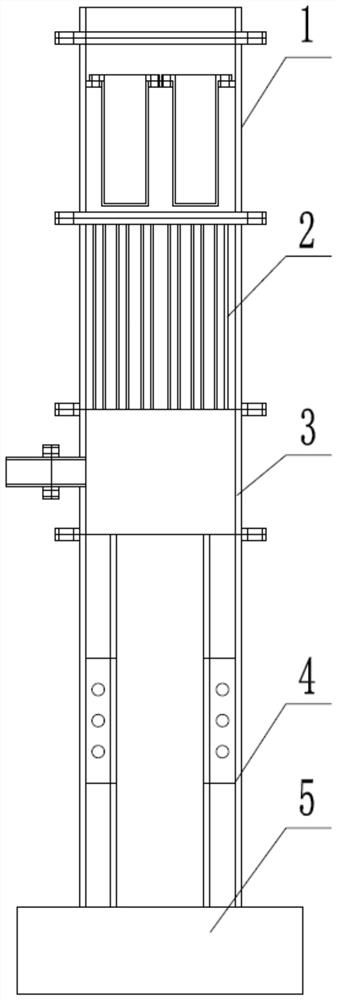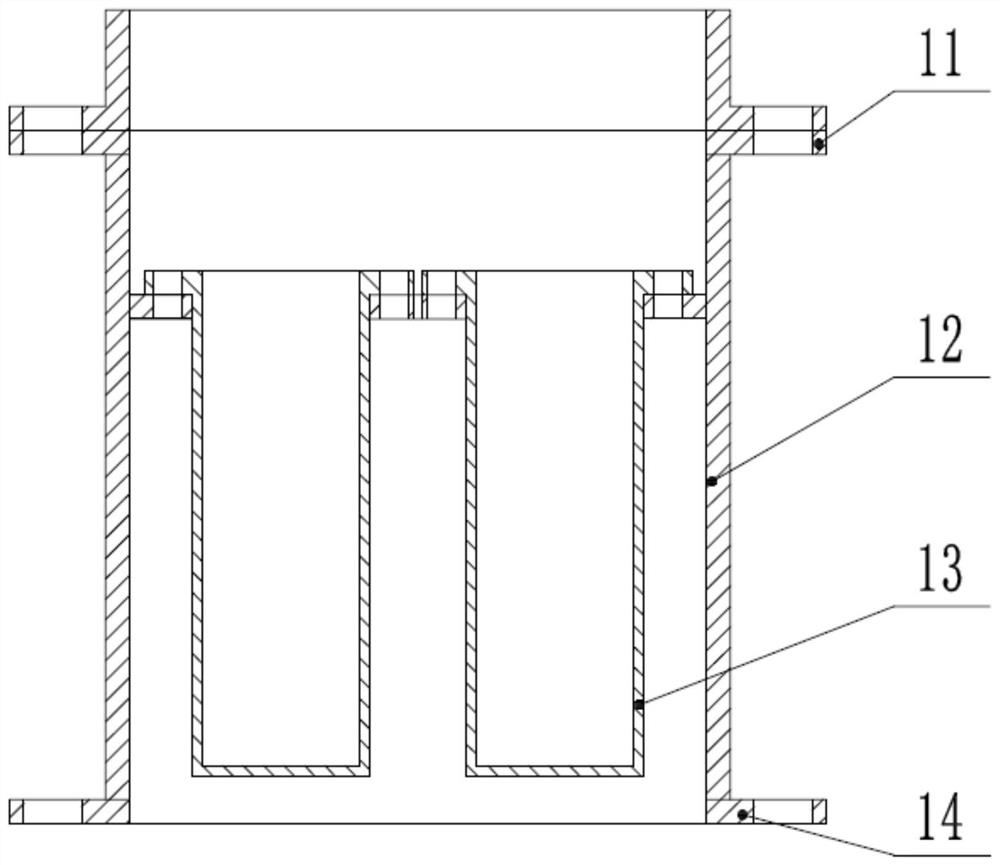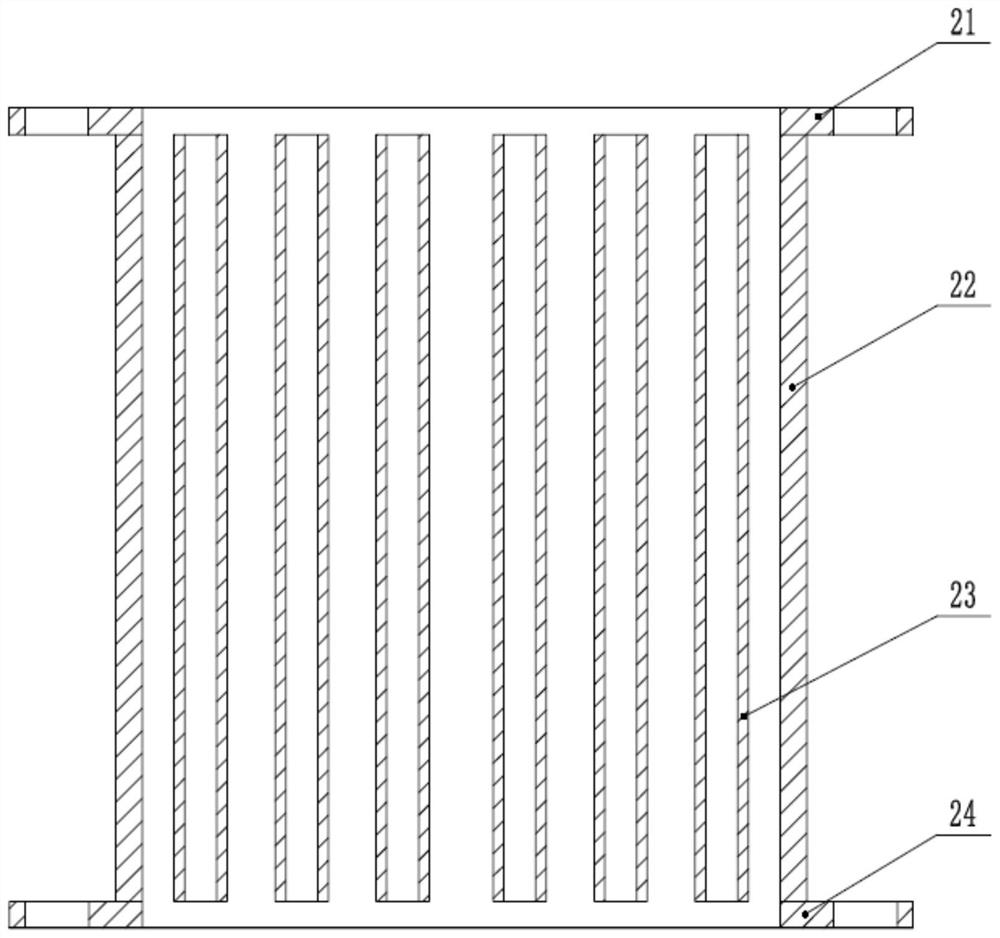A kind of radioactive pollution graphite incineration process
A radioactive and graphite technology, which is applied in the field of radioactive waste treatment and disposal, can solve the problems of incineration ash not being properly disposed of, combustion product TiC increasing in volume and weight, affecting the smooth operation of the incinerator, etc. Achieve temperature controllable and complete, factory application value significant effect
- Summary
- Abstract
- Description
- Claims
- Application Information
AI Technical Summary
Problems solved by technology
Method used
Image
Examples
Embodiment 1
[0060] A kind of radioactive pollution graphite incineration process, it comprises the following steps:
[0061] The first step, crushing and granulation of radioactive graphite:
[0062] Step 1, crushing and sieving: crush the radioactive graphite, and then sieve small graphite particles with a particle size of less than 1mm;
[0063] Step 2, material mixing: mix the granulation aid or the previous batch of incineration ash with the small graphite particles obtained in step 1 to obtain the mixed material, and control the moisture content of the mixed material so as to facilitate the extrusion molding of step 3; wherein, making Granulation aids include graphite oxidation aids and granulation binders, graphite oxidation aids are Fe 3 o 4 , the granulation binder is SiO 2 、Al 2 o 3 , or one or any combination of two or more in CaO; wherein, the weight ratio of the graphite oxidation aid and the granulation binder is 1:4 to 6, and the weight ratio of the graphite oxidation a...
Embodiment 2
[0088] A kind of radioactive pollution graphite incineration process, it comprises the following steps:
[0089] The first step, crushing and granulation of radioactive graphite:
[0090] Step 1, crushing and sieving: crush the radioactive graphite, and then sieve small graphite particles with a particle size of less than 1 mm;
[0091] Step 2, material mixing: mix the granulation aid with the small graphite particles obtained in step 1 to obtain the mixed material, and control the moisture of the mixed material so as to facilitate the extrusion molding of step 3; wherein the granulation aid includes graphite oxide Auxiliary and granulation binder, graphite oxidation auxiliary is Fe 3 o 4 , the granulation binder is Al 2 o 3 Wherein, the weight ratio of graphite oxidation auxiliary agent and granulation adhesive is 1:4~6, and the weight ratio of graphite oxidation auxiliary agent and granulation adhesive can not only guarantee that more difficult-to-combustible graphite is...
Embodiment 3
[0116] A kind of radioactive pollution graphite incineration process, it comprises the following steps:
[0117] The first step, crushing and granulation of radioactive graphite:
[0118] Step 1, crushing and sieving: crush the radioactive graphite, and then sieve small graphite particles with a particle size of less than 1 mm;
[0119] Step 2, material mixing: mix the previous batch of incineration ash with the small graphite particles obtained in step 1 to obtain a mixed material, and control the moisture content of the mixed material so as to facilitate extrusion molding in step 3; wherein, the granulation aid includes graphite Oxidation aid and granulation binder, graphite oxidation aid is Fe 3 o 4 , the granulation binder is SiO 2 Wherein, the weight ratio of graphite oxidation auxiliary agent and granulation adhesive is 1:4~6, and the weight ratio of graphite oxidation auxiliary agent and granulation adhesive can not only guarantee that more difficult-to-combustible g...
PUM
 Login to View More
Login to View More Abstract
Description
Claims
Application Information
 Login to View More
Login to View More - R&D
- Intellectual Property
- Life Sciences
- Materials
- Tech Scout
- Unparalleled Data Quality
- Higher Quality Content
- 60% Fewer Hallucinations
Browse by: Latest US Patents, China's latest patents, Technical Efficacy Thesaurus, Application Domain, Technology Topic, Popular Technical Reports.
© 2025 PatSnap. All rights reserved.Legal|Privacy policy|Modern Slavery Act Transparency Statement|Sitemap|About US| Contact US: help@patsnap.com



